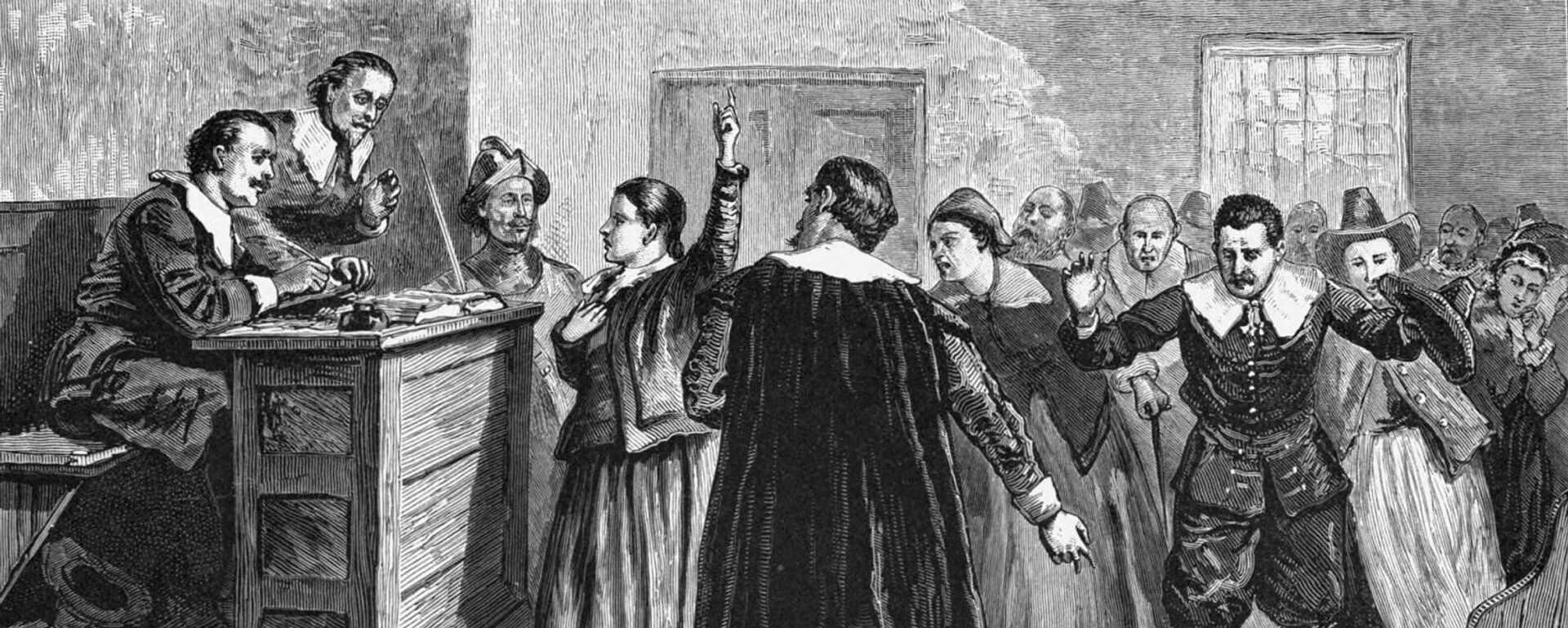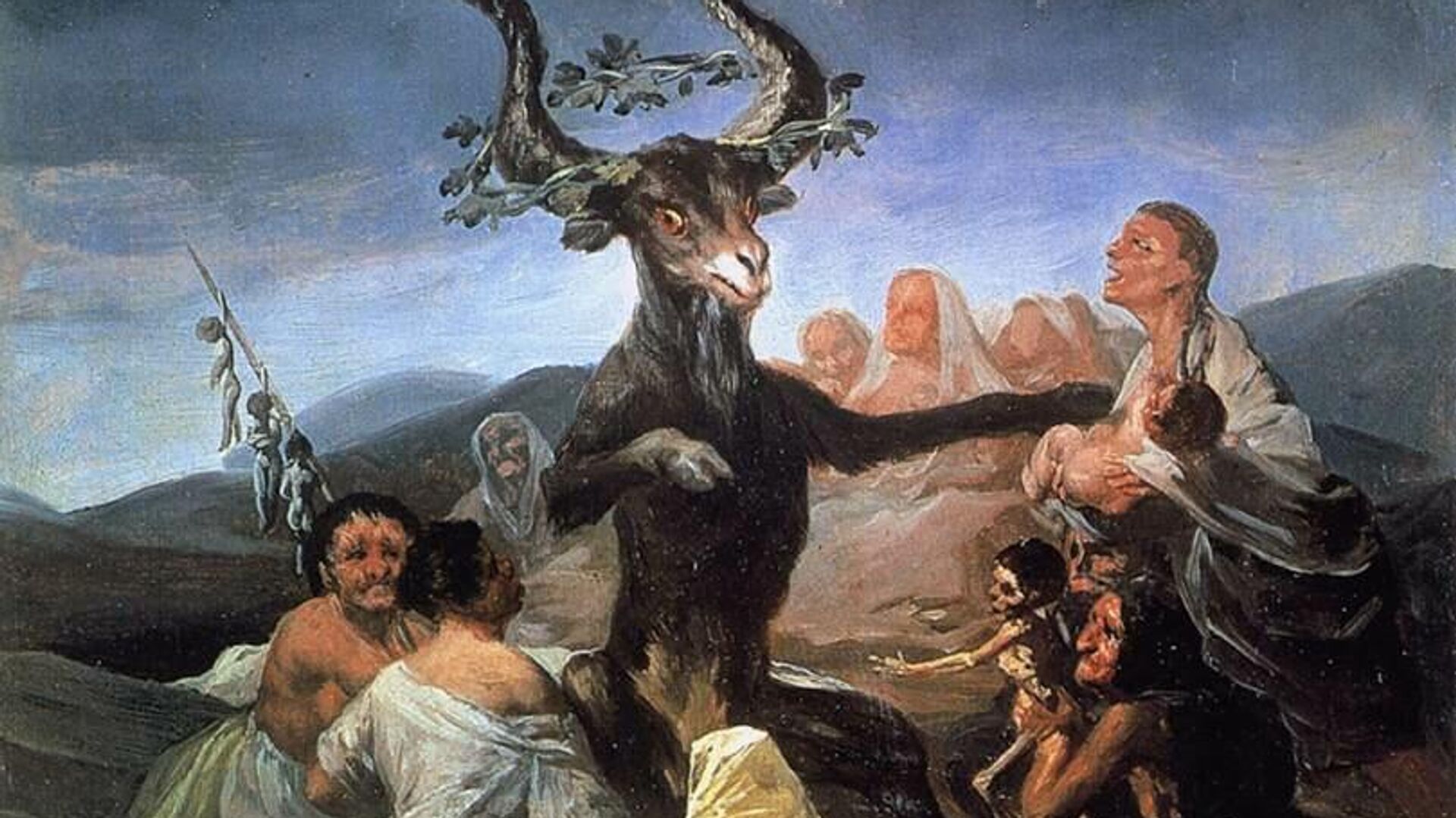https://sputnikglobe.com/20220127/better-late-than-never-catalonia-pardons-1000-people-tortured-killed-for-witchcraft-1092552754.html
Better Late Than Never? Catalonia Pardons 1,000 People Tortured, Killed for Witchcraft
Better Late Than Never? Catalonia Pardons 1,000 People Tortured, Killed for Witchcraft
Sputnik International
An anti-witch and wizardry frenzy swept much of Europe during the early modern era, with the regions of Basque and Catalonia witnessing some of the largest and... 27.01.2022, Sputnik International
2022-01-27T10:42+0000
2022-01-27T10:42+0000
2022-01-27T10:48+0000
catalonia
pardon
witch
witchcraft
https://cdn1.img.sputnikglobe.com/img/07e6/01/1b/1092550430_0:340:809:795_1920x0_80_0_0_7a74f44fe3e02fb226f3933a27be941d.jpg
Catalonia’s parliament has issued a resolution offering a formal pardon for the up to 1,000 people – among them over 700 women, who were “tried, tortured and executed” on “witchcraft” charges between the 15th and 18th centuries.Unlike much of the rest of Western Europe, where witch hunts and trials largely died down after the mid-17th century, in Catalonia the practice continued to flourish into the 18th century, with some villages even hiring ‘witch-finders’.The resolution passed 114 to 14, with six MPs abstaining.Persons accused of ‘witchcraft’ were blamed for the poor health of children, poor harvests and other calamities plaguing communities. According to University of Barcelona history professor Paul Castell, witchcraft charges were more prevalent in Catalonia than elsewhere due to the immense power of local feudal lords, and local laws under which a confession served as sufficient evidence of guilt. Women with independent wealth and those engaged in traditional medicine were automatically deemed suspicious.One other detail distinguishing Catalonia’s persecution of ‘witches’ was the preference for hangings, rather than burnings, presumably because the former was cheaper.Between 1580 and 1630, as many as 50,000 people across Europe, the vast majority of them in the regions of modern-day Germany, Austria, the Netherlands and Belgium, plus France and the Polish-Lithuanian Commonwealth were sentence to death for witchcraft.The Spanish Inquisition, a campaign of terror led by the Catholic Church which persecuted as many as 150,000 people for heresy and led to the killing of some 32,000 people, generally treated witchcraft claims with scepticism, according to historians, with persons accused of engaging in the practice often set free by inquisitors.Joan Cazabrujas, a Catalan witch-finder from the village of Sallent, found 33 ‘witches’ who were subsequently charged with witchcraft and killed. An Inquisition investigation later determined that the women were innocent and had Joan himself executed.Catalonia is the latest European region to formally pardon those killed in the witch trials or otherwise commemorate their memory, with Scotland, Norway and Switzerland issuing similar resolutions.
https://sputnikglobe.com/20211101/back-to-1692-the-last-charged-salem-witch-to-be-exonerated-from-300-year-old-trials-1090376993.html
https://sputnikglobe.com/20191201/pagan-police-called-to-investigate-culling-of-animals-defaced-with-satanic-symbols-1077452619.html
catalonia
Sputnik International
feedback@sputniknews.com
+74956456601
MIA „Rosiya Segodnya“
2022
News
en_EN
Sputnik International
feedback@sputniknews.com
+74956456601
MIA „Rosiya Segodnya“
Sputnik International
feedback@sputniknews.com
+74956456601
MIA „Rosiya Segodnya“
catalonia, pardon, witch, witchcraft
catalonia, pardon, witch, witchcraft
Better Late Than Never? Catalonia Pardons 1,000 People Tortured, Killed for Witchcraft
10:42 GMT 27.01.2022 (Updated: 10:48 GMT 27.01.2022) An anti-witch and wizardry frenzy swept much of Europe during the early modern era, with the regions of Basque and Catalonia witnessing some of the largest and most gruesome judgements against witchcraft in the Iberian Peninsula despite general scepticism toward the phenomenon by the Spanish Inquisition.
Catalonia’s parliament has issued a resolution offering a formal pardon for the up to 1,000 people – among them over 700 women, who were “tried, tortured and executed” on “witchcraft” charges between the 15th and 18th centuries.
Lawmakers led by pro-independence, nationalist and left-leaning parties led the charge in supporting the resolution after local historians discovered Catalonia to have been a pioneer of sorts when it came to witch hunts, with the practice starting there in the 1470s, and what’s believed to be the first European law against witchcraft enacted in the Catalonian city of Lleida in 1424.
Unlike much of the rest of Western Europe, where witch hunts and trials largely died down after the mid-17th century, in Catalonia the practice continued to flourish into the 18th century, with some villages even hiring ‘witch-finders’.
The resolution
passed 114 to 14, with six MPs abstaining.
Persons accused of ‘witchcraft’ were blamed for the poor health of children, poor harvests and other calamities plaguing communities. According to University of Barcelona history professor Paul Castell, witchcraft charges were more prevalent in Catalonia than elsewhere due to the immense power of local feudal lords, and local laws under which a confession served as sufficient evidence of guilt. Women with independent wealth and those engaged in traditional medicine were automatically deemed suspicious.

1 November 2021, 02:10 GMT
One other detail distinguishing Catalonia’s persecution of ‘witches’ was the preference for hangings, rather than burnings, presumably because the former was cheaper.
Between 1580 and 1630, as many as 50,000 people across Europe, the
vast majority of them in the regions of modern-day Germany, Austria, the Netherlands and Belgium, plus France and the Polish-Lithuanian Commonwealth were sentence to death for witchcraft.
The Spanish Inquisition, a campaign of terror led by the Catholic Church which persecuted as many as 150,000 people for heresy and led to the killing of some 32,000 people, generally treated witchcraft claims with scepticism, according to historians, with persons accused of engaging in the practice often set free by inquisitors.
Joan Cazabrujas, a Catalan witch-finder from the village of Sallent, found 33 ‘witches’ who were subsequently charged with witchcraft and killed. An Inquisition investigation later determined that the women were innocent and had Joan himself executed.
Catalonia is the latest European region to formally pardon those killed in the witch trials or otherwise commemorate their memory, with Scotland, Norway and Switzerland issuing similar resolutions.

1 December 2019, 10:34 GMT





